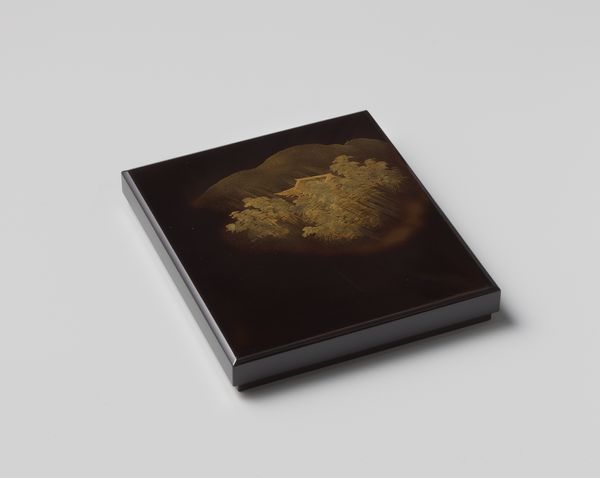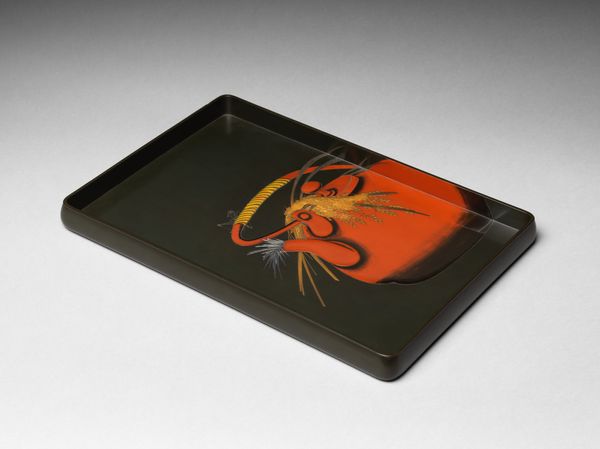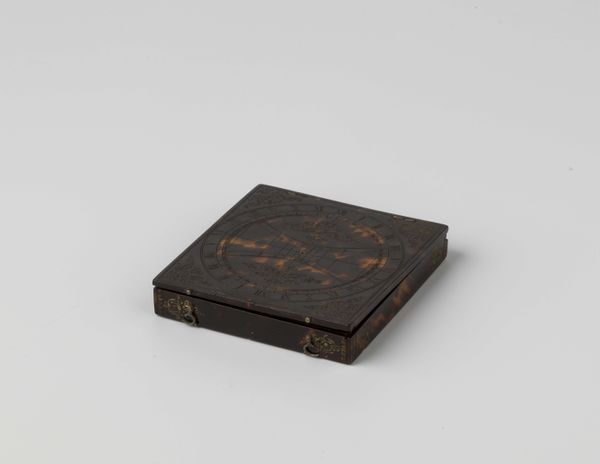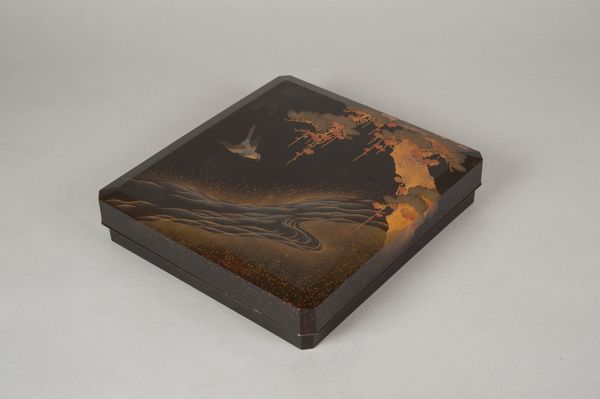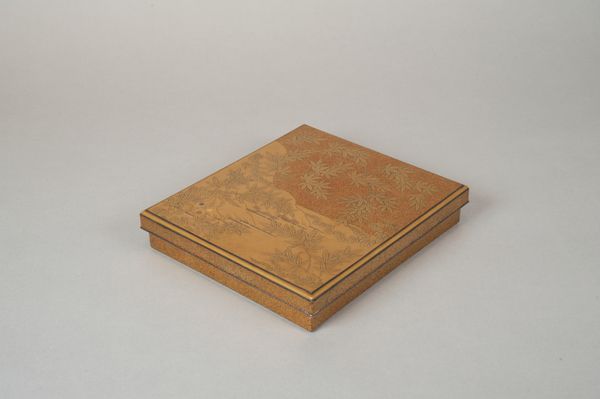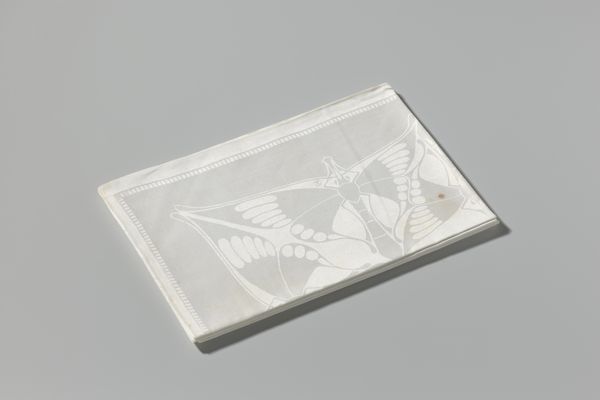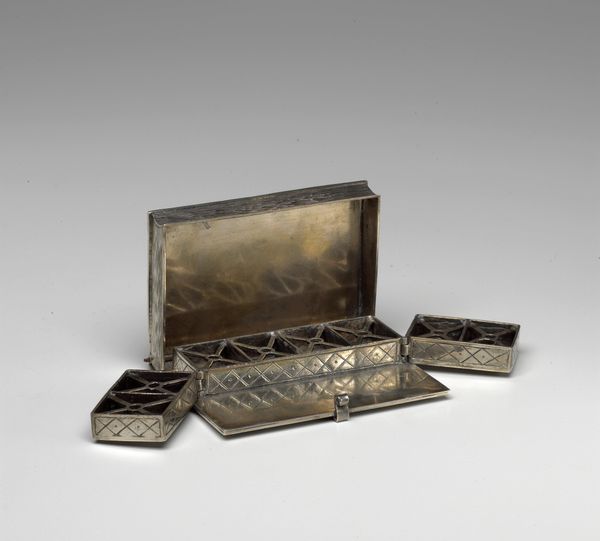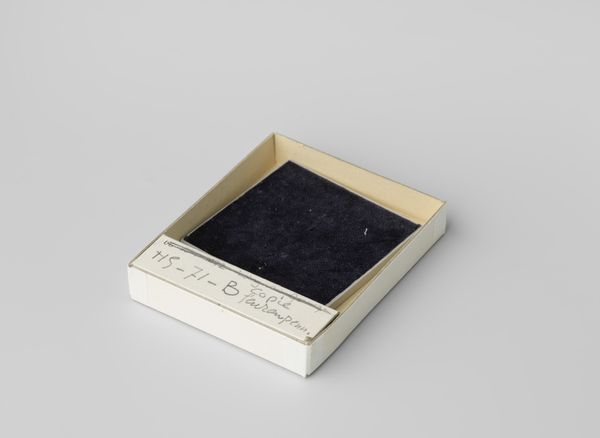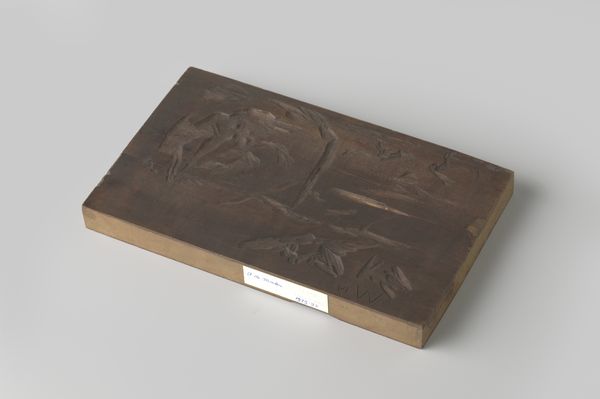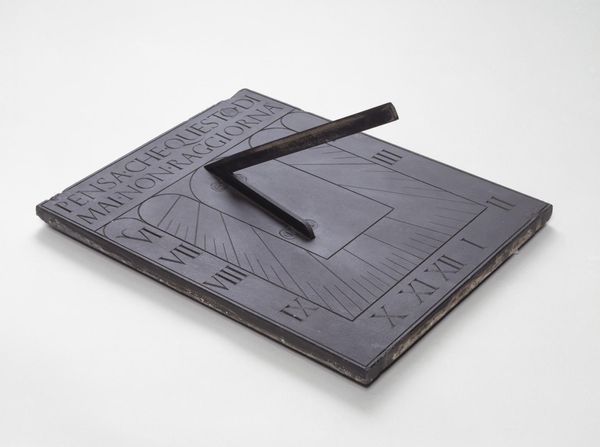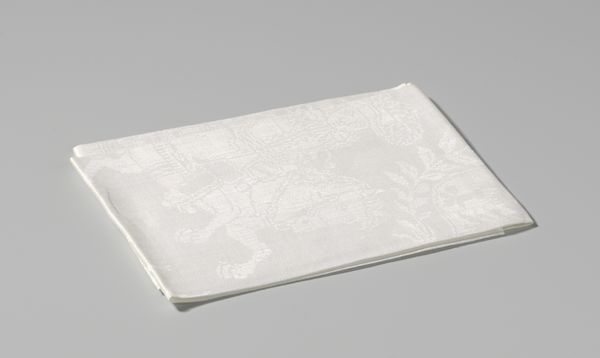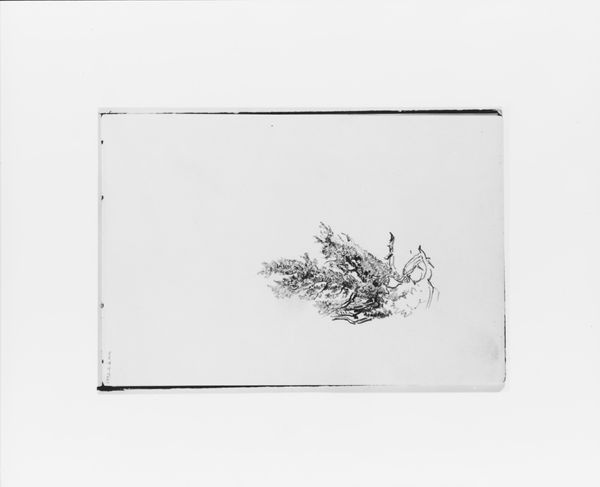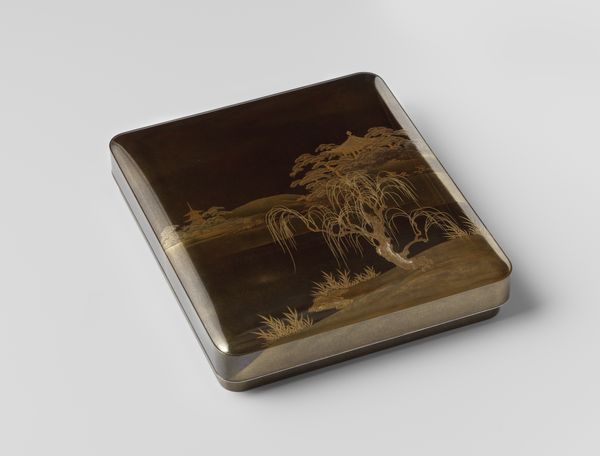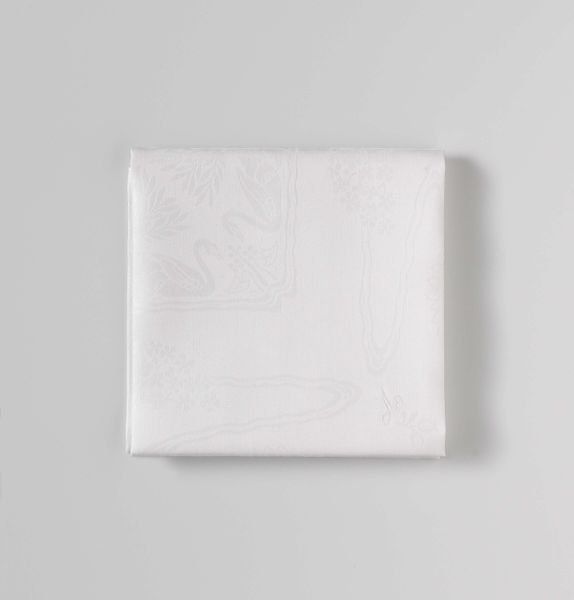
drawing, metal
#
drawing
#
metal
#
asian-art
Dimensions: height 1 cm, width 11 cm, depth 14 cm
Copyright: Rijks Museum: Open Domain
This small tray depicting Daikoku, the God of Wealth, was made by Shibata Zeshin, an artist working in 19th century Japan. Zeshin was known for his innovative approach to lacquerware, elevating what was considered a craft into the realm of fine art. During the Edo and Meiji periods, there was a rise in urban culture and a growing merchant class, which also changed the nature of religious iconography. Gods like Daikoku became associated with commercial success and prosperity. Zeshin’s choice to depict Daikoku on a functional object like a tray is indicative of this shift. It also speaks to the changing social status of artists, who sought to appeal to the tastes and needs of this new class of consumers. Understanding this artwork requires us to look into the economic and social history of Japan during this period, using resources such as historical documents, trade records, and studies of popular culture. The meaning of art changes depending on its social and institutional context.
Comments
No comments
Be the first to comment and join the conversation on the ultimate creative platform.
